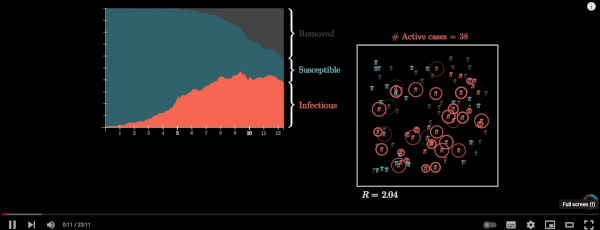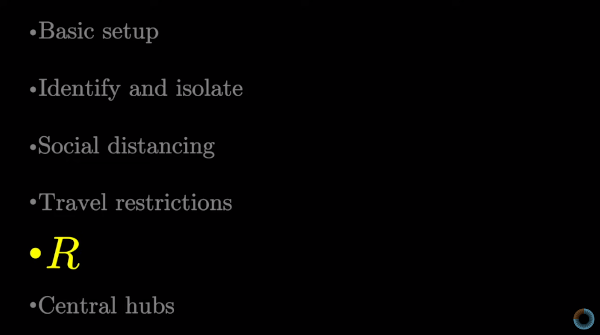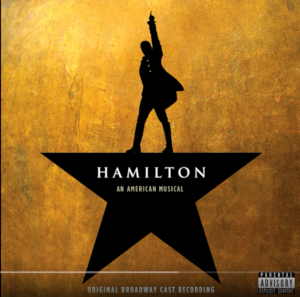“I’m not going to waste my shot
It’s time to take a shot”
Hamilton, an American musical
In April 2020 Dr Anthony Fauci, an internationally renowned immunologist and an adviser (somewhat reluctantly) to President Donald Trump as the lead of the White House Coronavirus Task Force, said in an interview before The Economic Club of Washington D.C. ‘What keeps me up at night is the emergence of a brand new infection, likely jumping species from an animal; that's respiratory born, highly transmissible, with a high degree of morbidity and mortality. And, lo and behold, that's where we are right now.’
To date the USA has had over 86 million cases of confirmed SARS-CoV-2 infections and a million Americans have died from the disease (in Australia around 50 people are still dying of the disease weekly). The country’s death rate was the second highest worldwide, only slightly behind the leader, Brazil. Such a result seems incredible for the country with the most advanced health systems in the world, although access to high quality care is restricted and depends on being able to afford expensive treatments. It is far from universally accessible.
American author, Michael Lewis, looked at the first year of the American covid epidemic in his book, The Premonition - A Pandemic story. He describes how the American approach to pandemic planning evolved under the George W Bush administration arising out of the Biodefense Directorate of the Homeland Security Council in 2005.
The Directorate to that time had focussed on malicious attacks by foreign powers using agents such as anthrax or smallpox as the vectors of an attack. Under Dr Rajeev Venkayya, senior director for biodefense at the White House, the plan was updated to deal with the far more likely and dangerous SARS-like infections.
The plan called for the early detection of new infectious disease outbreaks and restricting travel to slow or stop the spread. This would allow time for the development of vaccines and drugs to treat the infection. Success would result from communities coming together, such as they did in natural disasters like the frequent tornadoes and hurricanes of the American gulf states, and from external threats like the 9/11 attack, and taking concencerted action against a biological threat.

Pandemic modelling
Research on disease spread became increasingly sophisticated during the Bush and Obama administrations. Computer generated simulations allowed researchers to model how the disease could spread quickly and what modifiable factors would hasten or slow or even eradicate a new infectious agent.
These SIR models (Susceptible, Infectious, Recovered (or Removed)) suggested that early identification and effective isolation was central to stopping spread.
Another way to limit the spread was to decrease the ease with which the disease passed from one person to another. Masks, hand washing and the closure of schools and large cultural gatherings all contributed to effective disease control. Also effective was the physical separation of people. A new verb “social distancing” - now all too familiar - came into widespread use.
Travel restrictions between cities were also shown to be effective but only if instigated early and strictly. Australia, as an island thousands of miles from its neighbours (except PNG) became a real world example of how it might work.
Coordinating the pandemic response through a designated Federal agency was also part of the plan for effective early management, which is the key to halting an epidemic before it gets a foothold in the community.

Computer Models of Infectious Disease Spread and Control
The Centers for Disease Control (CDC) was the responsible American agency. Yet Lewis describes it as being ineffective in the early stages of the pandemic, hamstrung by bureaucratic processes and political interference. He gives much more kudos to the country's Chief Health Officers (CHO) who are empowered by State legislation to take any measures deemed necessary to contain emerging health threats.
This latter approach will be familiar to Australians where each of the State CHOs emerged from obscurity to feature nightly on our TVs announcing, in conjunction with the politicians, the latest public health mandates and restrictions.
For many years there have been calls for an Australian Centre for Disease Control to improve, amongst other reasons, coordination of the country's response to infectious diseases.
While there is strong support in some circles, America and Sweden have shown it is not a panacea on its own. In the Australian context, it is also far from clear whether the State/Territory governments are prepared to cede their public health responsibilities and resources to a Commonwealth agency, despite the stated wishes of the incoming Labor government.
So why did America do so badly in the pandemic?
While bureaucracy and a fractured health system have played a part, some argue that “American exceptionalism” was also a factor. This emphasises liberty, freedom of choice, individual responsibility and laissez-faire economics as the basis for a prosperous society and stands in stark contrast to the Chinese model. Tight government control in China facilitated strict and early lockdown measures that were shown to work well, at least in the early stages of the pandemic before authoritarian behaviour by officials began to anger the population.
While the virus does not seem to care what political system is in place to help or hinder its spread, many authoritarian countries have not managed COVID-19 well. However, the more liberal nations, including Australia and New Zealand, have been largely successful in navigating the pandemic.
The factor that makes the most difference at the start of a new infection is an early and comprehensive response. Delaying only a week can make the difference between containment and exponential growth.
America, Australia and much of the western world is emerging from the pandemic, fitfully in some places. As the percentage of the population that has had COVID-19 passes beyond 50%, restrictions have continued to ease. The new Omicron variants are more infectious but less lethal in an immunised population and antivirals and new therapies such as Evusheld, a preventive monoclonal antibody for the immunocompromised, limit mortality in the most vulnerable patients.
As we emerge from the COVID-19 pandemic, the message for the next “big one” will be familiar to Australians. As with earlier economic shocks we will need to “Go early, go hard and go households” and then, when the vaccines are developed, have a shot.
Alexander Hamilton, was the first Secretary of the Treasury of the United States. He is credited with creating much of the US Constitution and in establishing the country's sound financial footing in its embryonic years. He is said to have “thrown away” his shot in a duel with Vice-President Aaron Burr in 1804. He died the next day.
















